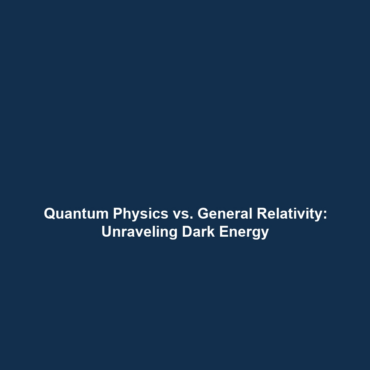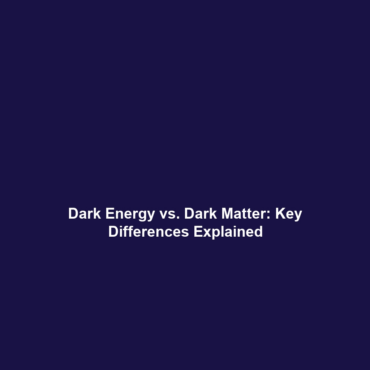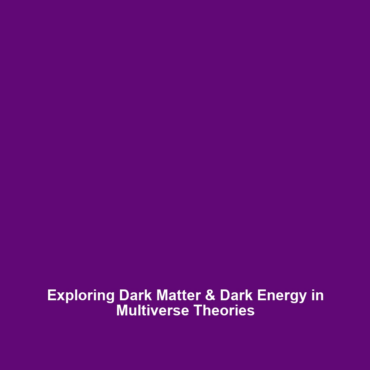Understanding Subtopics within Dark Matter & Dark Energy
Introduction
The exploration of Subtopics is crucial in the study of Dark Matter and Dark Energy. These enigmatic components make up approximately 95% of the universe, influencing cosmic expansion and structure. Understanding Subtopics is not only significant for astrophysics but also enhances our comprehension of the fundamental workings of the universe. This article will delve into the significance of Subtopics within the context of Dark Matter and Dark Energy, examining key concepts, real-world applications, current challenges, and future research pathways.
Key Concepts of Subtopics in Dark Matter & Dark Energy
Subtopic 1: The Nature of Dark Matter
Dark Matter, an invisible substance that does not emit light or energy, is primarily detected through its gravitational effects on visible matter. Subtopics such as the particle nature of Dark Matter and its interaction with ordinary matter are crucial for understanding the universe’s mass distribution.
Subtopic 2: The Role of Dark Energy
Dark Energy, a mysterious force driving the accelerated expansion of the universe, presents various Subtopics for research, including its equation of state and potential origins, which are essential for cosmological models.
Applications and Real-World Uses
Subtopics related to Dark Matter and Dark Energy have significant implications for various fields. For instance:
- How Dark Matter is used in Astrophysics: Techniques such as gravitational lensing leverage the effects of Dark Matter to map its distribution across galaxy clusters.
- Applications of Dark Energy in Cosmology: Understanding Dark Energy can lead to innovations in technologies that depend on a deeper comprehension of cosmic expansion.
Current Challenges in Studying Subtopics
The study of Subtopics faces several challenges:
- Lack of Direct Evidence: Both Dark Matter and Dark Energy remain elusive, presenting difficulties in direct detection.
- Complex Interactions: Understanding how Subtopics interact within various cosmic structures is still a topic of intense research.
- Model Accuracy: Existing models may not sufficiently account for all observed phenomena, leading to potential misinterpretations of Subtopics.
Future Research and Innovations
Ongoing research aims to uncover new dimensions related to Subtopics in Dark Matter and Dark Energy. Notable innovations include:
- Next-Gen Telescopes: New observational tools equipped with advanced technologies to provide better insights into cosmic phenomena.
- Particle Experiments: Initiatives like the Large Hadron Collider (LHC) continue to seek direct evidence of Dark Matter particles, with promising future results.
Conclusion
In summary, Subtopics within Dark Matter and Dark Energy play a pivotal role in expanding our understanding of the cosmos. As research continues to evolve, overcoming the challenges of studying these mysterious entities promises to unlock fundamental truths about the universe. For more insights into related topics, consider exploring our articles on Dark Matter Applications and Dark Energy Research.









